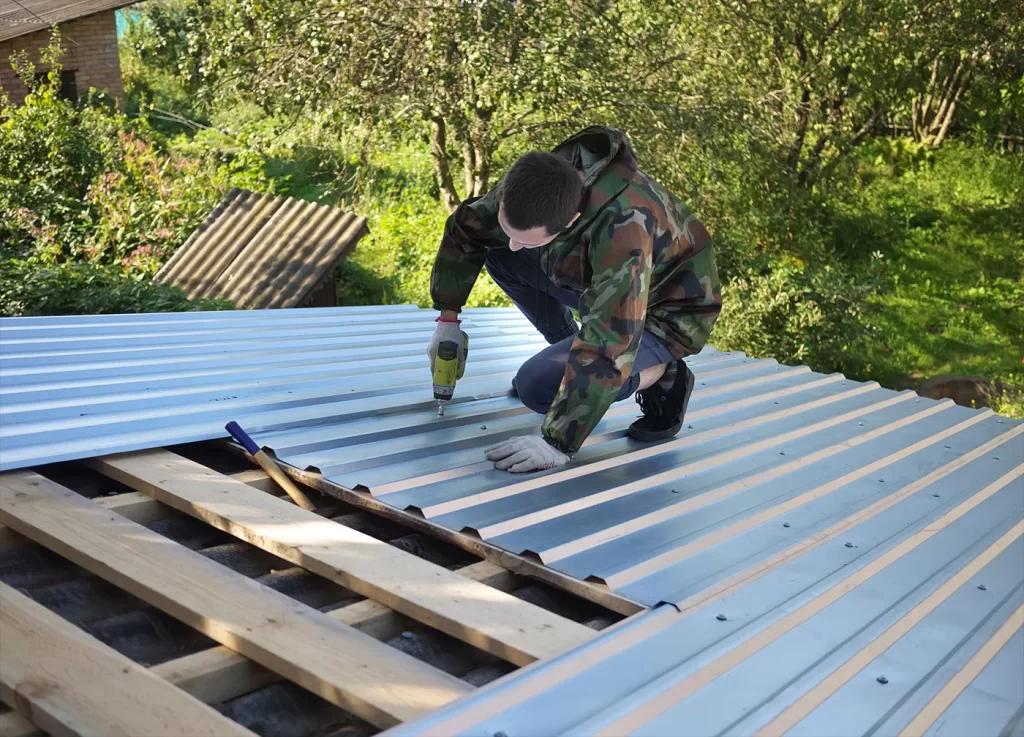Let’s explore the factors determining how long a roof restoration takes and what to expect during the process. Roof restoration is crucial for maintaining your home’s longevity and aesthetic appeal; therefore, understanding the timeline for a roof restoration can help plan and meet the expectations of Geelong homeowners.

Understanding Roof Restoration: What It Involves
Roof restoration is more than just a simple repair; it’s a comprehensive process that revitalizes your roof, extending its lifespan and improving its appearance. Restoration typically includes cleaning, repairing, and recoating the roof to ensure optimal condition.
Key Steps in Roof Restoration
- Inspection and Assessment: The process begins with thoroughly inspecting the roof to identify any issues such as leaks, cracks, or damaged tiles. This step is crucial for determining the extent of the work required.
- Cleaning: The roof is cleaned to remove dirt, debris, moss, and lichen. This often involves high-pressure washing to remove all contaminants, providing a clean surface for repairs and recoating.
- Repairs: Any damaged areas, such as cracked or broken tiles, are repaired or replaced. Flashings and seals are also inspected and repaired to prevent future leaks.
- Rebedding and Repointing: Rebedding and repointing are often required for tiled roofs. This involves securing the ridge caps and applying a flexible pointing material to protect against water ingress.
- Priming and Reconditioning: The roof is then primed, and several coats of protective paint or sealant are applied. This enhances the roof’s appearance and provides a protective barrier against the elements.
- Final Inspection: After the restoration, a final inspection ensures that all work has been done to the highest standard and the roof is in excellent condition.
Factors Influencing How Long a Roof Restoration Takes
How long a roof restoration takes can vary depending on several factors. On average, a roof restoration in Geelong can take anywhere from 2 to 7 days, but this timeline can be influenced by the following:
1. The size of the roof
The size of your roof is one of the most significant factors in determining the restoration timeline. Larger roofs naturally require more time for cleaning, repairs, and recoating.
2. Type of roofing material
Different roofing materials require different restoration techniques. For example, tiled roofs may take longer to restore than metal roofs due to rebedding and repointing. Additionally, some materials may require specific primers or coatings, adding to the overall time.
3. The extent of damage
If your roof has significant damage, the restoration process will take longer. Extensive repairs, such as replacing numerous tiles or fixing widespread leaks, add time to the project. The roof’s condition at the restoration’s start will largely dictate how long the process takes.
4. Weather conditions
Geelong’s weather can be unpredictable, and adverse conditions such as rain or high winds can delay restoration. Since roof restoration involves working outdoors, certain steps like cleaning and recoating depend highly on dry weather.
5. Access to the roof
The ease of access to your roof can also impact the restoration timeline. If your roof is difficult to reach or has steep pitches, it may take longer for the restoration team to complete the work safely.
Typical timeline for roof restoration in Geelong
While the specific timeline can vary, here’s a general overview of how long a roof restoration takes:
- Day 1: Inspection and initial cleaning
The first day typically involves a detailed inspection of the roof, followed by initial cleaning to remove dirt and debris. - Day 2: Repairs and Rebedding/Repointing
Any necessary repairs, including rebedding and repointing for tiled roofs, are carried out. This stage may take longer if there is significant damage. - Day 3: Priming and Base Coating
The roof is primed, and the first coat of paint or sealant is applied. Depending on the weather, this step might extend into the next day to allow for adequate drying time. - Day 4-5: Re-Coating and Finishing
Additional coats are applied to ensure the roof is well-protected and looks new. This stage can take one to two days, depending on the required coats. - Day 6-7: Final Inspection and Touch-Ups
The restoration team conducts a final inspection and makes any necessary touch-ups to ensure the roof is restored to the highest standard.
Conclusion
How long a roof restoration takes depends on various factors, such as the size and type of roof, the extent of damage, and weather conditions. Usually, In Geelong, it takes between 2 and 7 days. By understanding these factors and the steps involved, homeowners can better plan for their roof restoration and ensure the process goes smoothly. Investing in a professional roof restoration like Roll Top Roofing not only enhances the appearance of your home but also adds years to the life of your roof, protecting your property for the long term.
FAQs
- Can roof restoration be done in winter?
Roof restoration can be done in winter, but the process may take longer due to shorter daylight hours and potential rain delays. It’s advisable to consult with your roofing contractor about the optimal time for restoration. - How much does roof restoration cost in Geelong?
The roof restoration cost varies depending on the size and condition of the roof and the materials used. You can expect to pay between $4,000 and $12,000 on average. - Is roof restoration noisy?
Yes, roof restoration can be noisy, especially during the cleaning and repair stages. If you’re concerned about noise levels, it’s advisable to inform your neighbours beforehand. - How often should a roof be restored?
A roof should typically be restored every 15 to 20 years, depending on material and environmental conditions. Regular maintenance can extend the time between restorations. - Does roof restoration increase property value?
Yes, a well-restored roof can significantly increase your property’s curb appeal and value, making it an excellent investment if you plan to sell your home.
